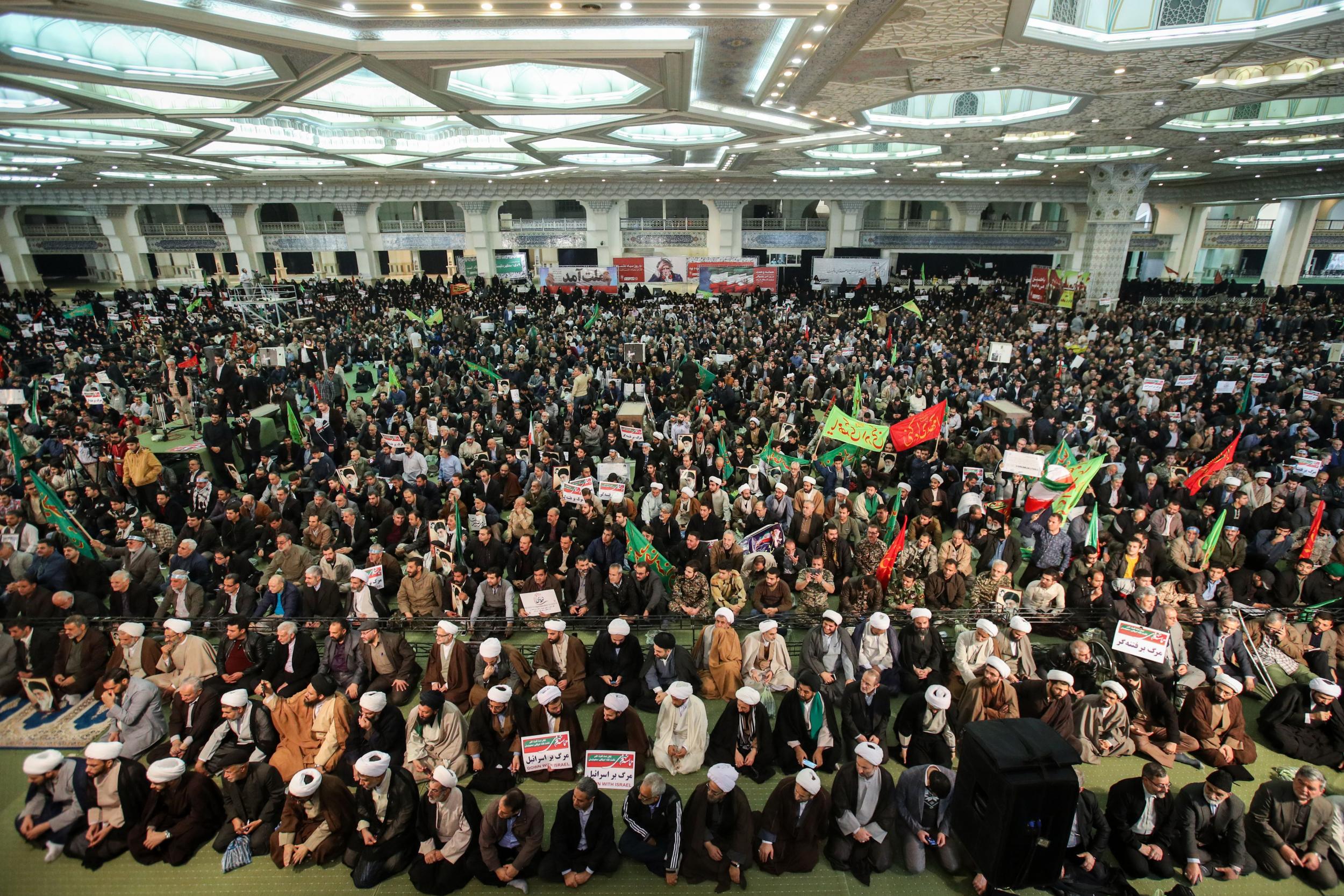Iran: By supporting protests, Donald Trump may inadvertently be helping the government's cause
Analysis: The government acknowledges there is legitimate anger about rising food prices, but claims opponents are trying to use it to destabilise the reformist agenda

Donald Trump took to Twitter to decry the Iranian government over protests in the country. His tweet, a copy, almost word for word, of the White House press secretary’s, accused Tehran of “squandering the nation’s wealth to fund terrorism abroad” and ended with the declaration: “The world is watching”.
In reality there has been little reaction abroad to the marches in a number of Iranian cities and the counter-demonstrations which have followed. But the disturbances will be good news for Mr Trump as an avowed adversary of Iran, a belligerent stance he forcefully reiterated in his first foreign trip as President, to Saudi Arabia on an arms-selling mission.
The malign shadow of Mr Trump loomed over the Iranian presidential election I covered earlier this year. His threat to tear up the agreement over the country’s nuclear programme with world powers was seized on by hardliners to attack President Hassan Rouhani, charging that the reformist leader had been naive in trusting the West and has compromised the nation’s security.
The liberals were deeply concerned about what this held for the future with the prospect an American abrogation of the deal further strengthening the reactionaries.
Since then Mr Trump had refused to ratify the nuclear agreement, creating uncertainties for Iran’s international trade. Washington had already refused to lift the sanctions it was expected to under the deal, thus stymying the full economic benefits expected by the Iranian people and leading to criticism of the Rouhani government.
There have, in fact, been rewards in return for Iran limiting its uranium enrichment programme. Tehran, for example, now sells its oil in the global market and has signed deals for tens of billions of dollars of Western aircraft. But the aircraft purchase is one of many which may now be in jeopardy if the US Congress brings in the tougher sanctions Mr Trump wants.
Crucially, the economic situation has failed to adequately improve the lives of ordinary Iranians.
Unemployment remains high, at 12.4 per cent, up 1.4 per cent in the previous 12 months. There has been a steady rise in food prices with a drastic hike in the cost of poultry, by up to 40 per cent, one of the triggers for the protests.
The government blames the shortage and price rise due to the necessity of a cull to prevent an outbreak of avian flu. Some of the marches were also about low pay, not a new phenomenon. There had been peaceful protests and sit-ins over this in the past, but this time it added to the sense of general discontent.
Some of the protest, albeit a small part of it, has gone beyond immediate economic woes, with strident condemnation of corruption, the power of the conservative clergy as well as foreign policy, especially Iran’s involvement in the Syrian conflict.
Demonstrations had taken place in the holy cities of Mashhad and Qom. This was unusual, but not entirely surprising. In three visits to Qom in the last 18 months I had been struck by the increasing number of young people, including theology students, who had come forward to stress the need for change and reform, reflecting similar refreshing views in other cities.
But the hardliners remain a power to be reckoned with in Iran and they have been blamed by some for instigating the current troubles. The liberals note that the marches began after a number of recent reforms – the most eye-catching of which was the announcement that women in Tehran will no longer face potential arrest for not wearing head-scarves – were announced.
Eshaq Jahangari, the First Vice President, acknowledged that there was legitimate anger about rising prices. But, he went on to claim, opponents were also trying to destabilise the reformist government. “The people behind what is taking place think they will be able to harm the government. But when social movements and protests start in the streets, those who have ignited them are not always able to control them” he stated.
What happens next will depend on the scale of any further protests and the authorities’ reaction to them. So far any action has been taken by the police, with the Revolutionary Guards, fervent protectors of the Islamic Republic, staying in the barracks, thus showing tacit backing for the government.
There is a view that the Iranian government is being given a helping hand, inadvertently, in this time of trouble by Mr Trump.
Trita Parsi, the president of the Washington-based National Iranian American Council, said that “the fastest way to discredit these legitimate grievances expressed by the Iranian people is for Trump to throw himself in the mix”.
Amir Hamdani of the Atlantic Council think tank in New York concurred: “Anything Trump says about Iran will be rejected by the vast majority of Iranians, given his position in a host of issues that touch on Iranian prestige and national interests.”
Join our commenting forum
Join thought-provoking conversations, follow other Independent readers and see their replies
Comments